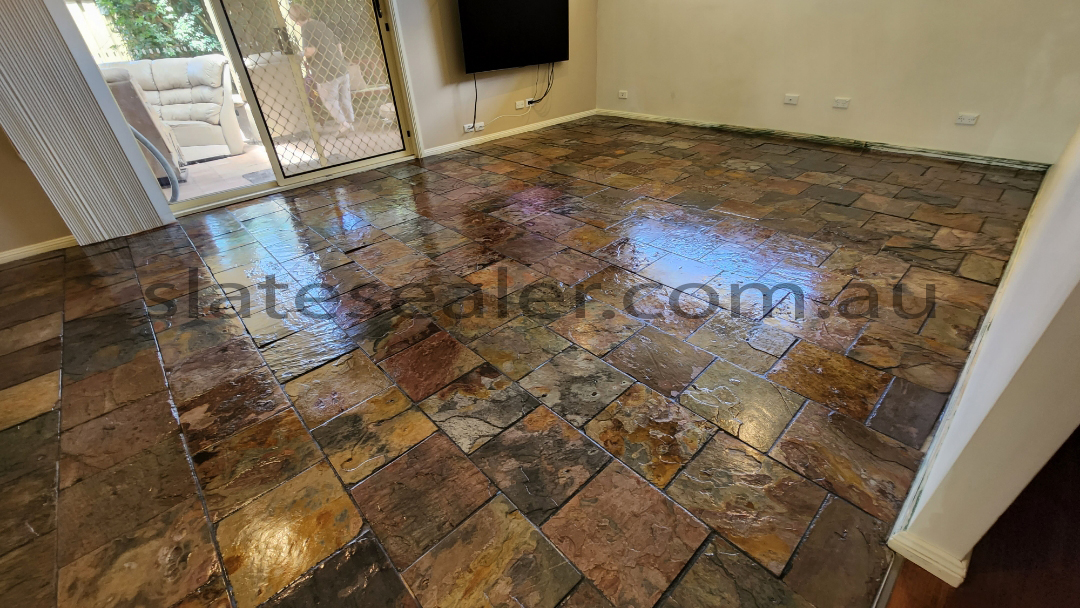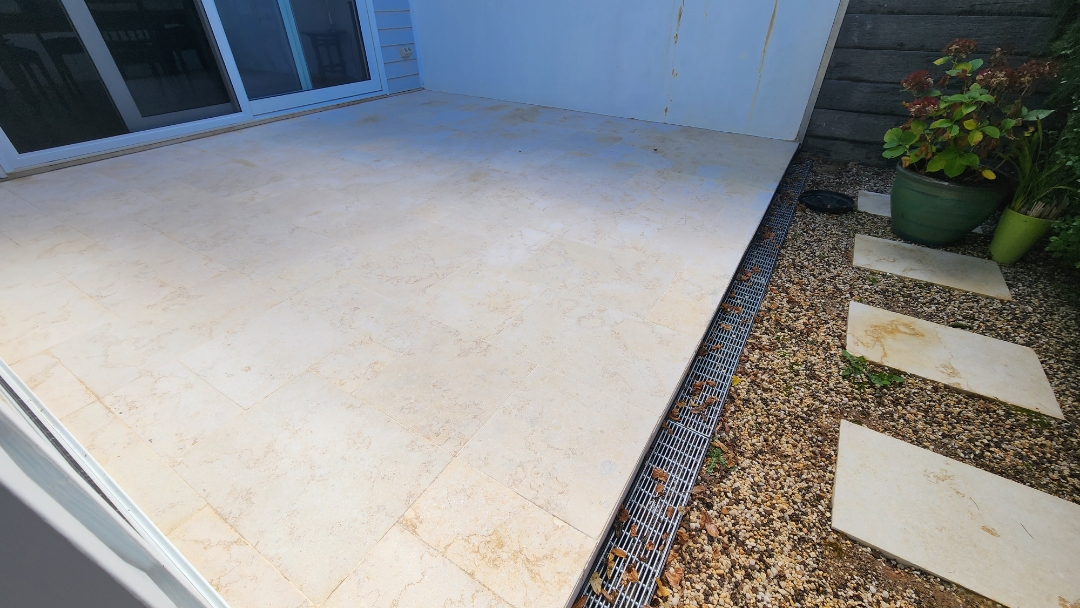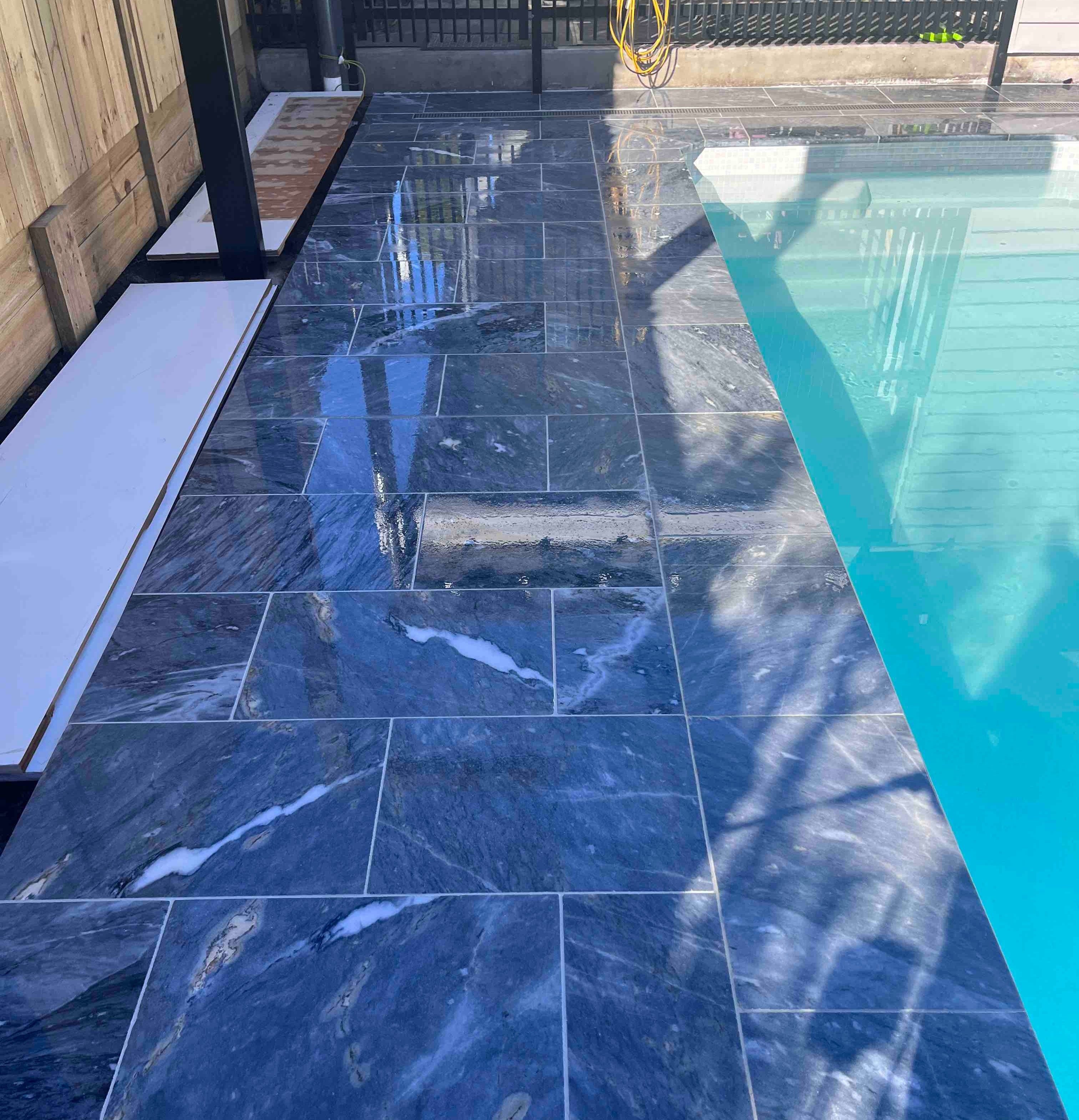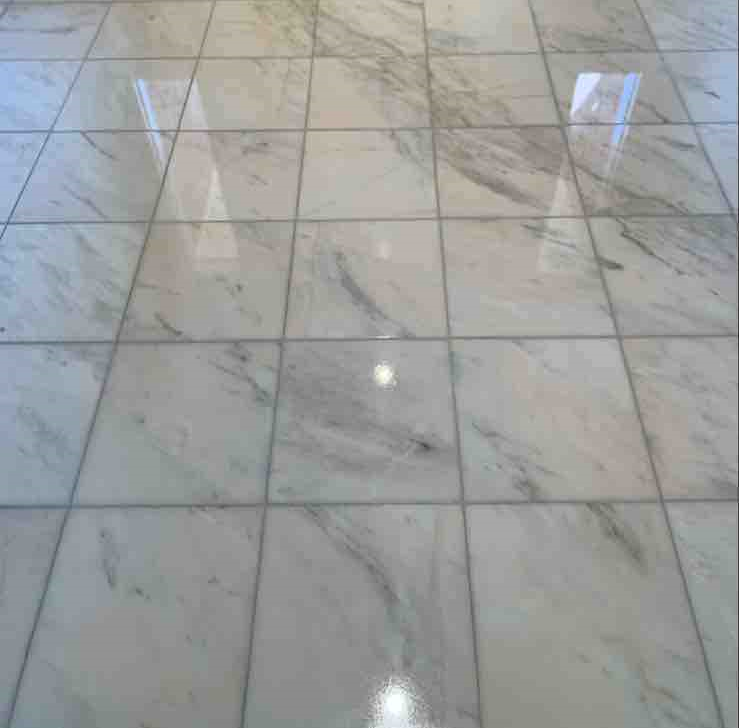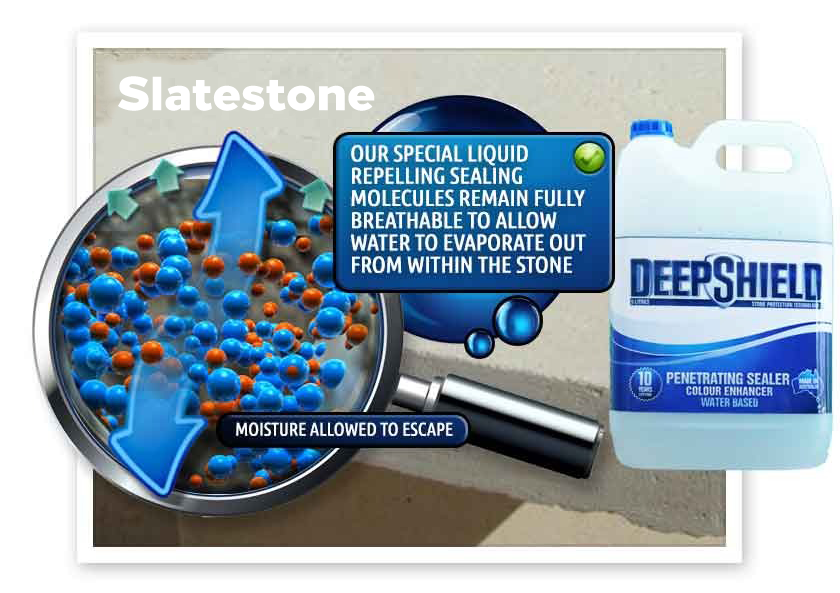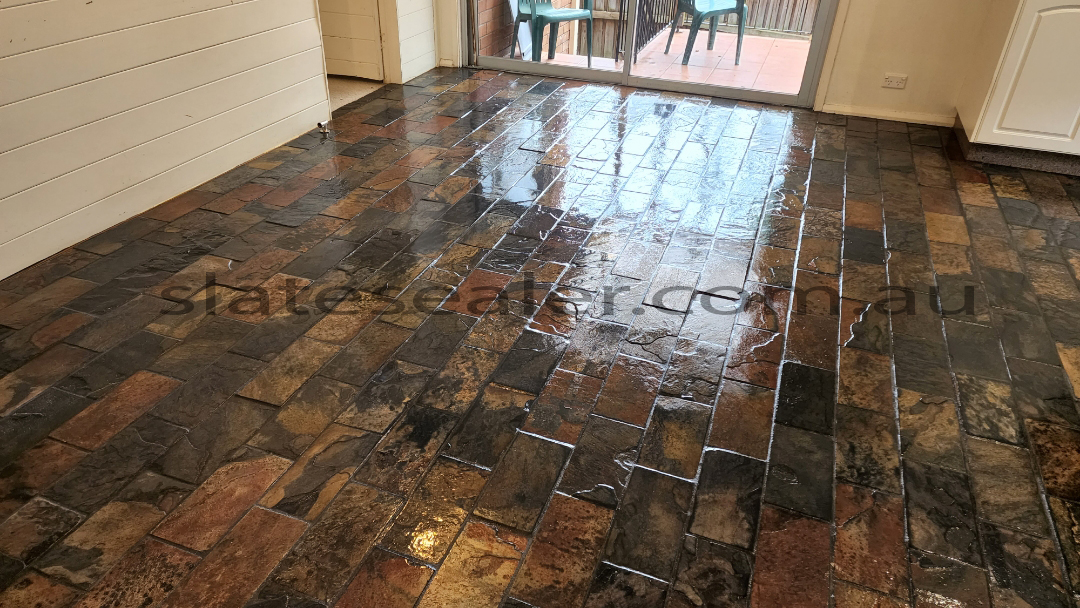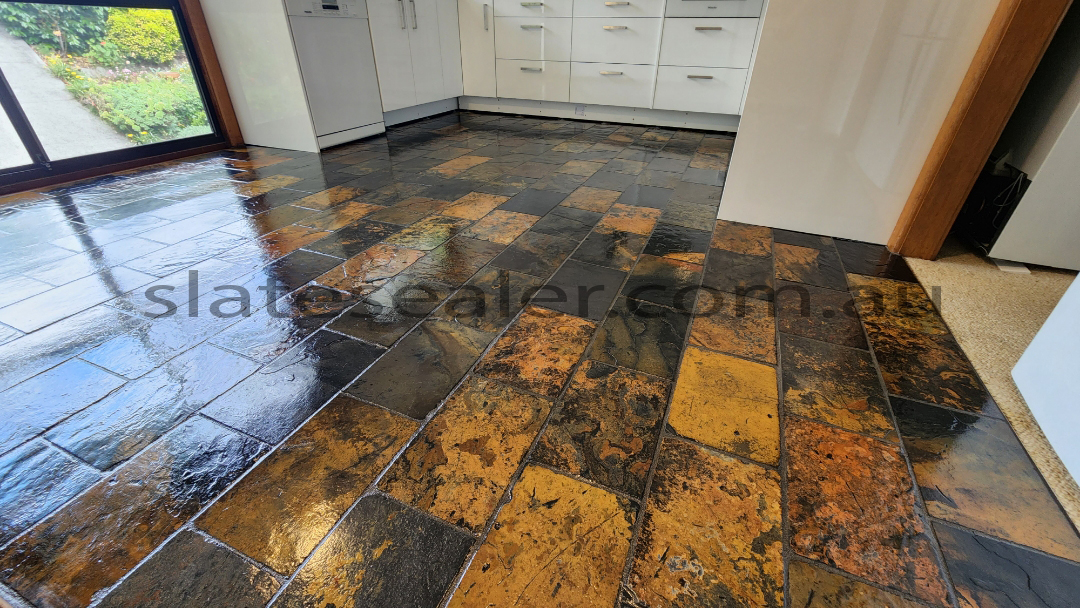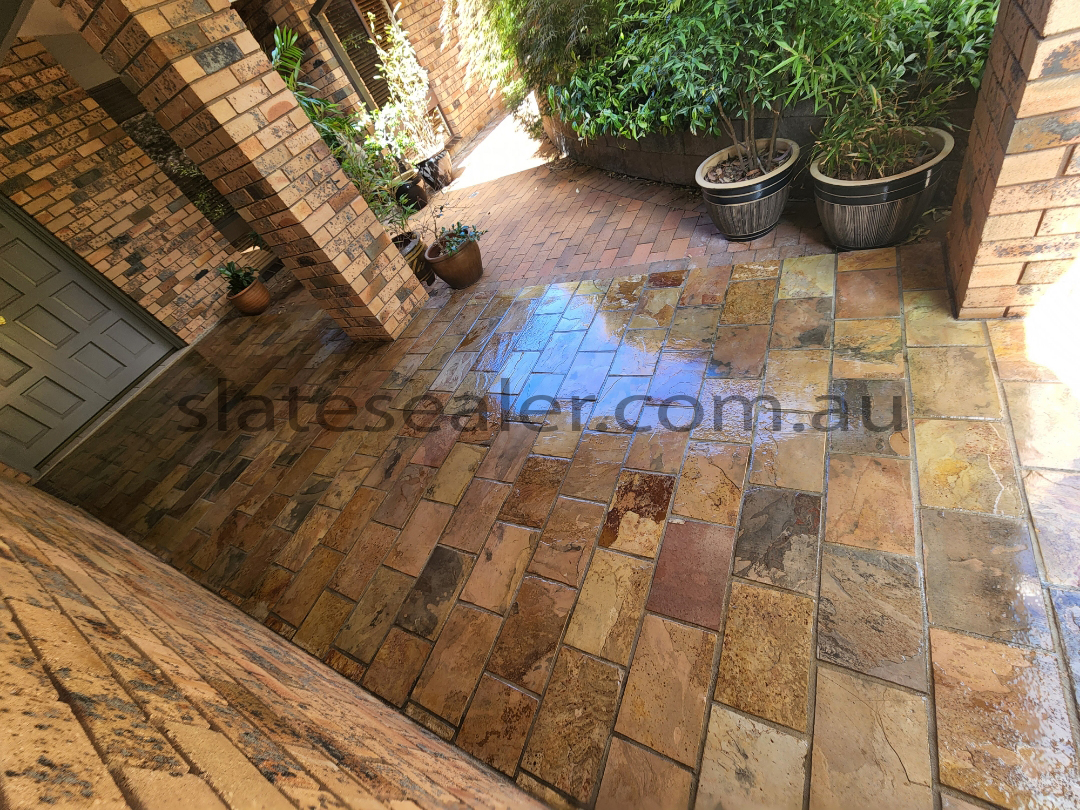To minimize the possibility of efflorescence on slatestone surfaces, it's essential to use a penetrating sealer. This type of sealer prevents water absorption while enabling the slatestone to release any accumulated moisture. Unsealed surfaces that retain moisture can lead to efflorescence deposits as the moisture evaporates.
A penetrating, impregnating sealer penetrates below the surface of the slatestone, filling voids and blocking water migration. This effectively prevents the buildup of salts within the stone, reducing the risk of efflorescence formation.
A deep penetrating sealer won't affect the slip resistance of your surfaces
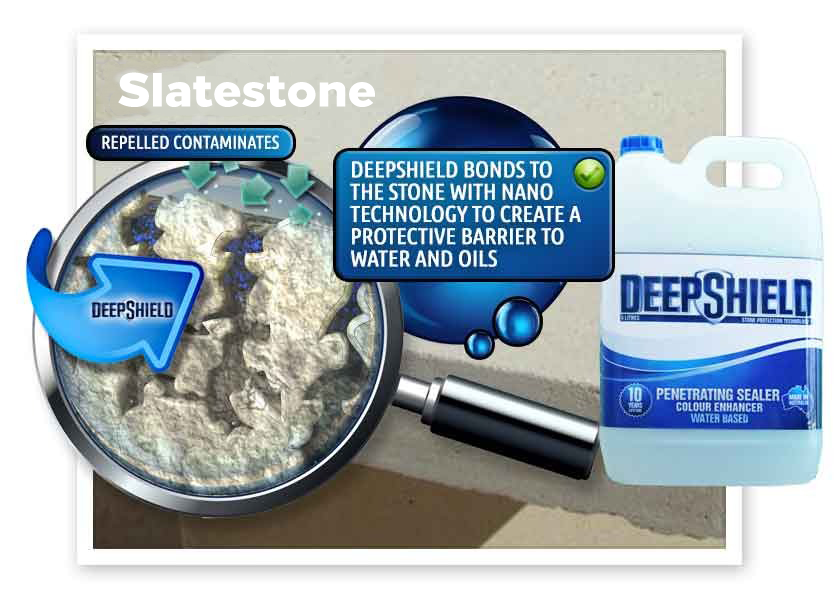
It will penetrate deep into the pore structure of slatestone, establishing a water-resistant barrier that effectively prevents the ingress of water and dissolved salts.
Avoid using topical coatings that block the pores of slatestone. These coatings have the potential to trap water inside the material, creating a slippery surface when wet.
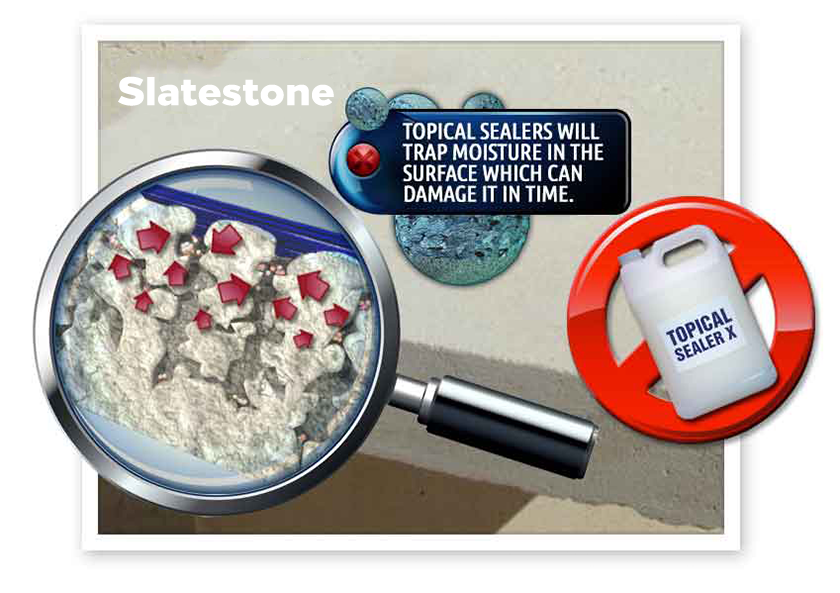
Slatestone is an ideal choice for poolside areas for several reasons. It offers aesthetic appeal, a comfortable feel underfoot, and maintains a suitable level of traction even when wet or exposed to sunlight. However, it's important to take proper care of slatestone in wet or saltwater environments to prevent erosion and maintain its integrity over time.
